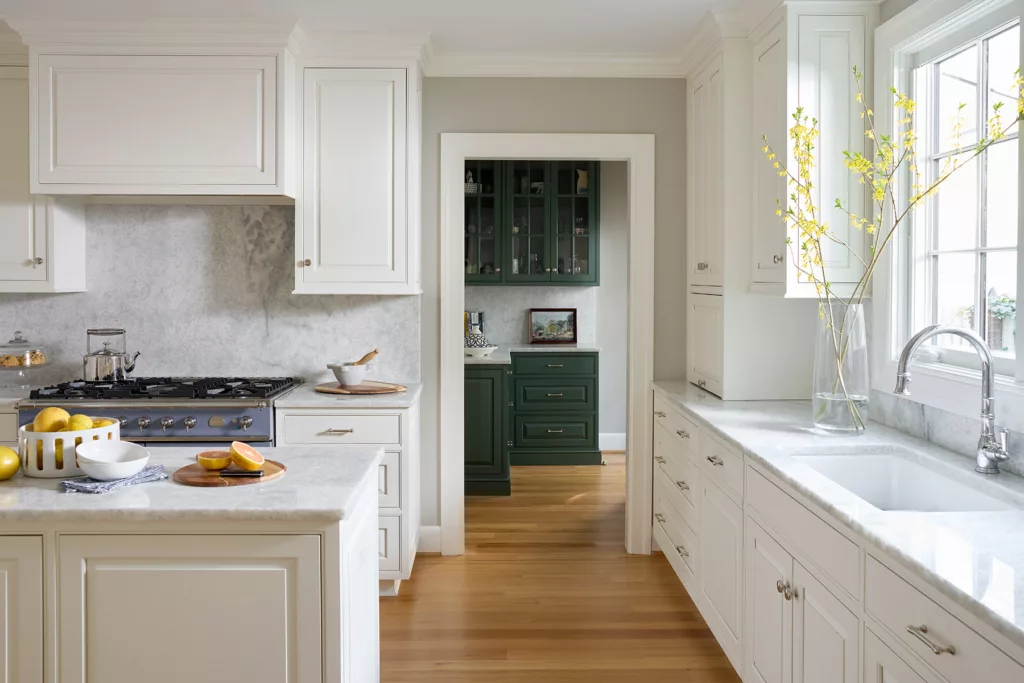
Choosing the right kitchen cabinet color can completely transform the heart of your home. Whether you’re remodeling or building from scratch, selecting the perfect palette brings your entire kitchen design together. At Quality Custom Cabinetry, we understand how impactful cabinet finishes can be—and we’re here to help you explore the best kitchen cabinet color ideas for your space.
In this guide, we’ll walk you through popular cabinet color trends, classic styles, and practical tips to help you choose colors that feel both personal and timeless.
Why Cabinet Color Matters
Cabinetry takes up a large amount of visual space in the kitchen. So naturally, the color you choose plays a huge role in setting the room’s tone—whether it’s warm and inviting, crisp and modern, or dramatic and bold.
Beyond style, cabinet color also affects how big or small your kitchen feels, how easy it is to clean, and how well it blends with your flooring, backsplash, and countertops.
The right cabinet color can:
- Brighten a small space
- Add contrast or visual interest
- Tie together natural and manmade materials
- Enhance resale value
- Reflect your personal style
Let’s take a closer look at the best kitchen cabinet color ideas to inspire your next project.
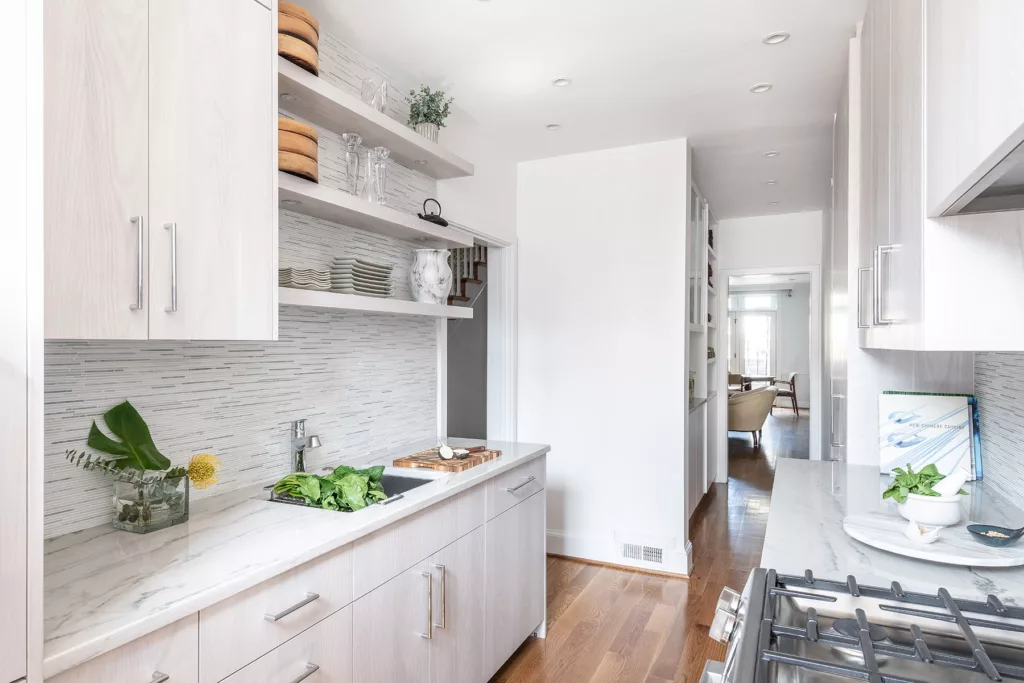
1. Timeless Whites and Creams
White kitchen cabinets have long been a favorite—and for good reason. They’re clean, classic, and never go out of style.
Benefits:
- Make kitchens feel larger and brighter
- Work with almost any wall color or countertop
- Reflect light beautifully
- Create a timeless, airy feel
Try pairing warm white cabinets with brass hardware for a cozy, traditional look—or opt for crisp, cool white with matte black accents for a more modern touch.
Popular shades:
- Seagull White
- Simple White
- Chantilly White
- Designer’s White
2. Versatile Light Grays
If white feels too stark, light gray cabinets offer a softer, more grounded alternative. Gray is a chameleon—it works in modern, transitional, and traditional kitchens alike.
Benefits:
- Neutral but not boring
- Hides smudges better than white
- Blends beautifully with wood tones or stone countertops
Light grays pair well with stainless steel appliances, polished nickel hardware, or warm brass finishes for contrast.
Popular shades:
- London Fog
- Stonington
- Coventry
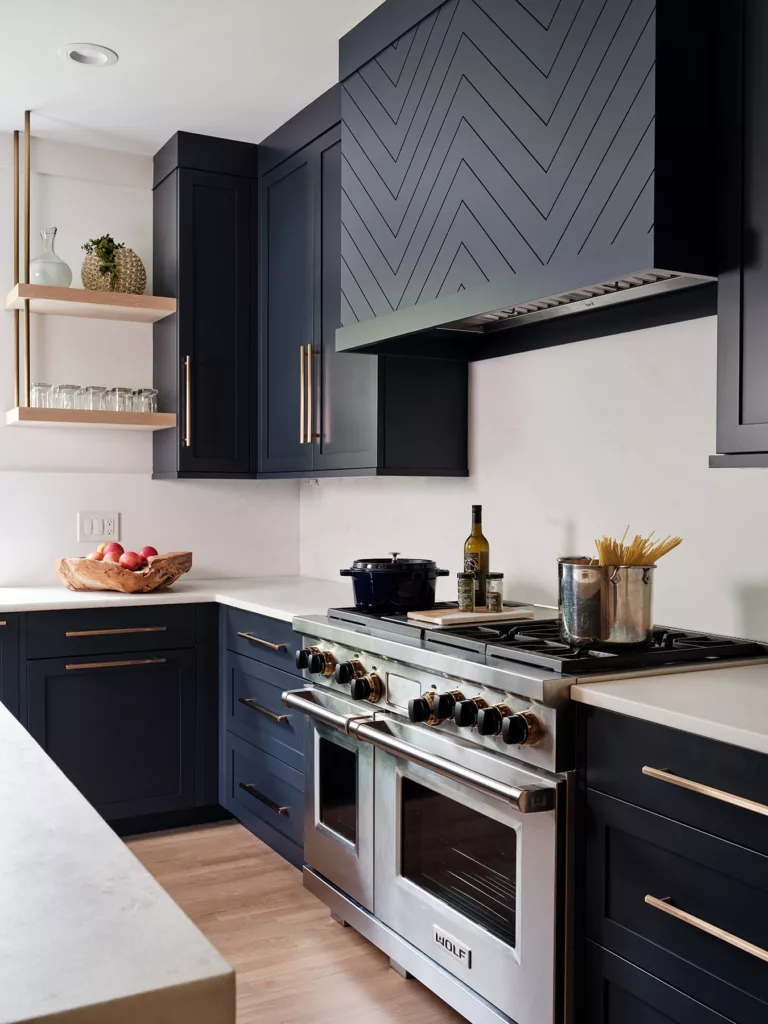
3. Deep Charcoal and Navy Blues
For a bold, moody aesthetic, consider darker hues like charcoal gray, deep navy, or even soft black. These rich tones work especially well in larger kitchens or those with plenty of natural light.
Benefits:
- Add drama and depth
- Pair well with lighter walls and countertops
- Make a striking statement on a kitchen island or lower cabinets
If you’re unsure about going full dark, try a two-tone cabinet layout—darker on the bottom, lighter on top.
Popular shades:
- Admiral Blue
- Trout
- Thunder
- Galaxy
4. Earthy Greens and Soft Sage
Nature-inspired colors are on the rise, and green kitchen cabinets are leading the way. From deep olive to soft sage, green creates a calming, organic feel.
Benefits:
- Brings the outdoors in
- Complements wood tones and brass accents
- Adds a cozy, collected feel
Use green on base cabinets paired with white uppers, or go full monochrome for a grounded, sophisticated kitchen.
Popular shades:
- Appleyard
- Ranger
- Saxony
- Watervale
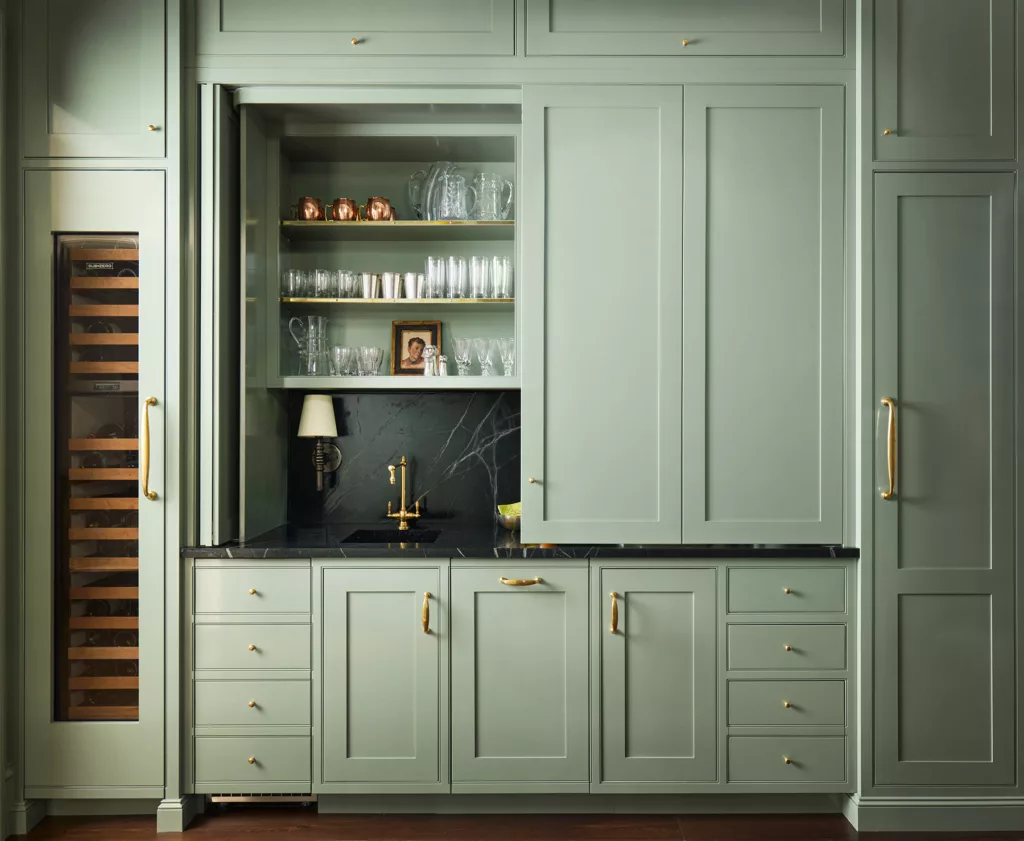
5. Warm Woods and Natural Finishes
If you love the look of natural materials, you can’t go wrong with stained wood cabinets. From light oak to dark walnut, natural wood adds richness and warmth that paint alone can’t match.
Benefits:
- Highlight the beauty of the wood grain
- Pair well with organic and rustic styles
- Require less upkeep than painted finishes
Modern wood finishes often lean toward matte or satin, letting the material shine without looking too glossy.
Popular wood tones:
- White oak (light and airy)
- Walnut (dark and luxurious)
- Maple (smooth and versatile)
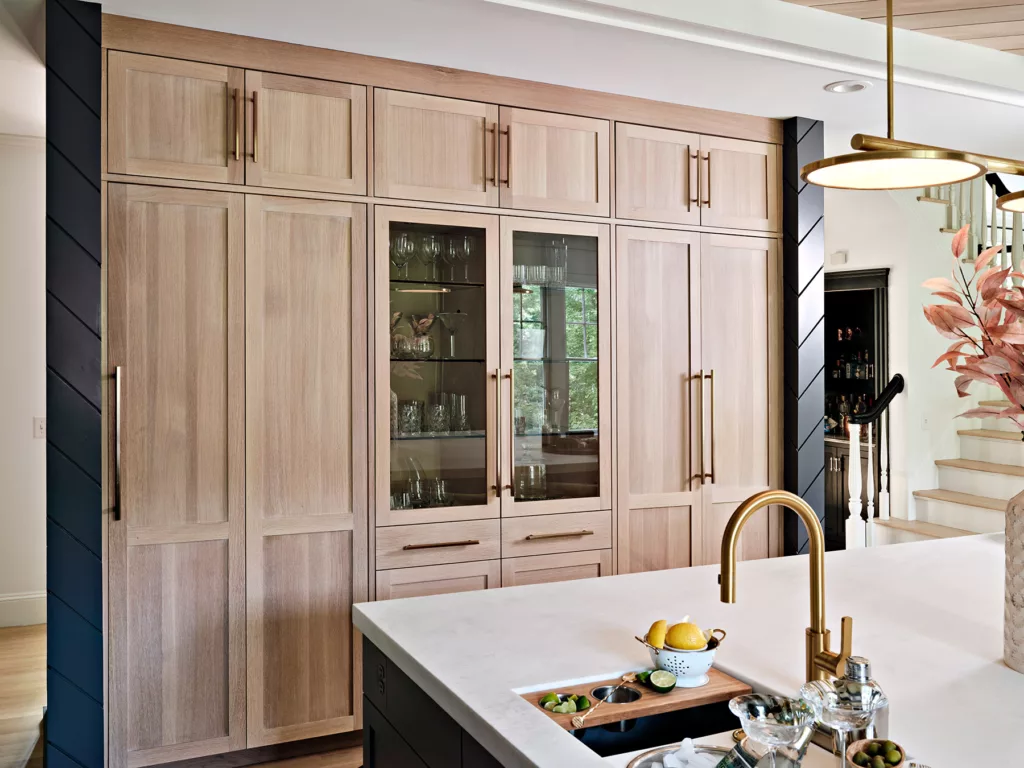
6. Two-Tone Cabinets
Can’t choose just one color? Two-tone kitchen cabinets give you the best of both worlds. This trend features one color on upper cabinets and a different color (often darker) on the lower ones or island.
Benefits:
- Add contrast and dimension
- Break up large runs of cabinetry
- Offer flexibility in color choice
Try pairing white uppers with navy lowers, or light gray uppers with wood-tone bases for balance and style.
7. Black for Bold Sophistication
Black kitchen cabinets aren’t for the faint of heart—but when done right, they’re stunning. Use them to add drama in modern kitchens or balance bright white countertops.
Benefits:
- Create a sleek, modern feel
- Pair beautifully with gold or brass hardware
- Offer a striking contrast to light flooring or backsplash
Just make sure your space has good lighting—black absorbs light and can make small rooms feel even smaller if overused.
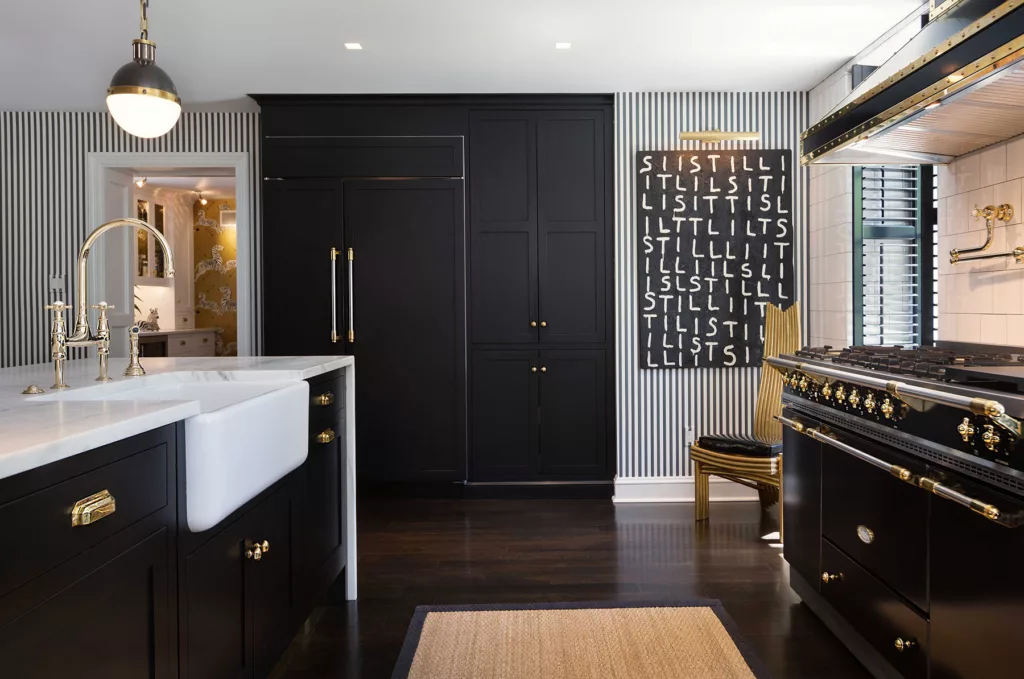
8. Beige, Taupe, and Sand
Neutral doesn’t have to mean boring. Beige, taupe, and sand tones offer understated warmth and pair well with both warm and cool palettes.
Benefits:
- Soften white walls
- Provide a rich base for natural materials
- Work with traditional, transitional, or coastal kitchens
These neutral kitchen cabinet colors are ideal for homeowners who want a peaceful, soothing vibe with timeless appeal.
Choosing the Right Paint Finish
The finish you choose can dramatically affect the look and durability of your cabinets.
- Matte: Best for low-traffic kitchens or areas where a modern look is desired. However, matte finishes can be harder to clean.
- Satin: A popular choice that offers a subtle sheen and is easy to wipe down.
- Semi-gloss: Reflects more light and resists stains—ideal for busy households.
- High-gloss: Eye-catching and sleek, but may highlight imperfections in older cabinets.
Maintenance and Cleanability
Lighter colors may show dirt and fingerprints more easily, especially in high-traffic kitchens. But with today’s advanced paint technology, many light finishes are designed to be easy to clean. For a lower-maintenance option, consider darker colors or natural wood tones, which are more forgiving and often hide smudges and dings better over time.
No matter what color you choose, maintaining your cabinets is simple when you use high-quality materials and finishes. Quality Custom Cabinetry uses only the finest finishes, ensuring long-lasting beauty and performance.
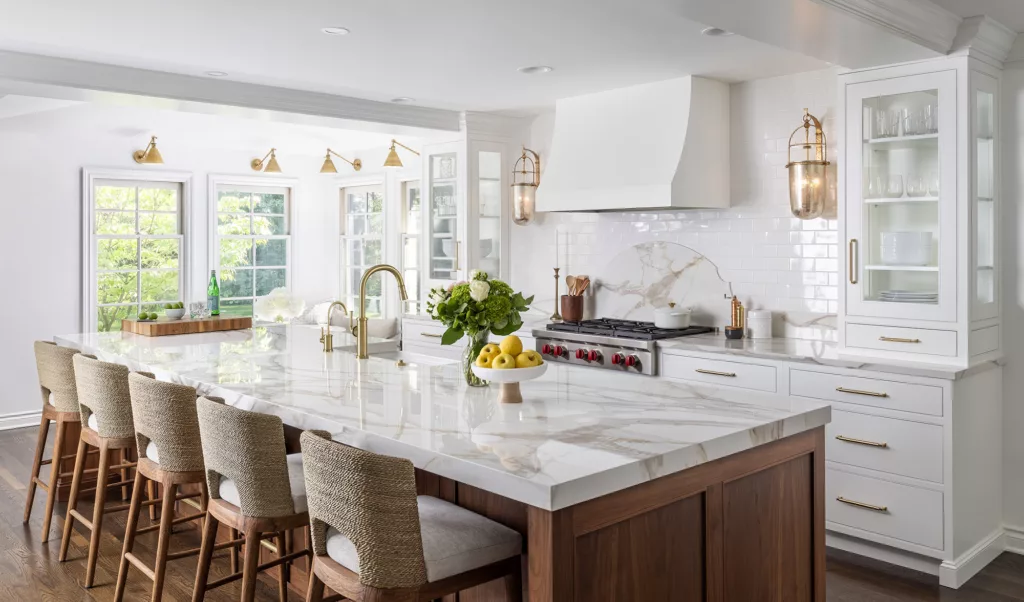
How to Choose Your Cabinet Colors
Here’s a step-by-step process to help you decide:
- Evaluate your kitchen’s natural light. Light affects how paint looks throughout the day.
- Look at your countertops, floors, and backsplash. Your cabinet color should complement them.
- Gather inspiration. Use online galleries, Pinterest, or home design magazines to find ideas.
- Order samples. Paint or stain small sample boards and test them in your kitchen space.
- Think long-term. Choose colors you’ll love for years—not just what’s trending.
Working With a Custom Cabinet Designer
Custom cabinetry gives you endless possibilities—not just in size and shape, but also in color. At Quality Custom Cabinetry, we work closely with you (or your designer) to select cabinet colors that elevate your entire kitchen design. Whether you want timeless white, a rustic stained oak, or a custom-matched blue-gray, we’ll make it happen with precision and care.
From soft-close hinges to luxury finishes, every detail matters. That’s why choosing custom cabinetry means more than just storage—it’s a design experience tailored to you.
The Psychology of Cabinet Colors
Cabinet paint colors don’t just impact the aesthetics of your kitchen—they also influence how you feel in the space. Understanding the psychology of color can help you choose a palette that supports your daily routines and emotional well-being.
White and cream create a sense of cleanliness, simplicity, and freshness. These shades are ideal if you want your kitchen to feel peaceful and uncluttered.
Gray adds a calming, neutral touch. It’s often associated with balance and elegance, especially in transitional or contemporary kitchens.
Blue tones promote calm and focus—perfect for kitchens that double as workspaces or family gathering spots.
Green connects us to nature and symbolizes renewal and health, making it a soothing choice for wellness-focused homes.
Warm tones like taupe, beige, and wood tones offer comfort and familiarity. They create a welcoming, grounded feel that works well in family-centered kitchens.
Bold colors like black or navy create a sense of drama and sophistication, adding a formal, stylish tone to your space.
By aligning your cabinet colors with the mood you want to create, you can design a kitchen that feels like a natural extension of your lifestyle.
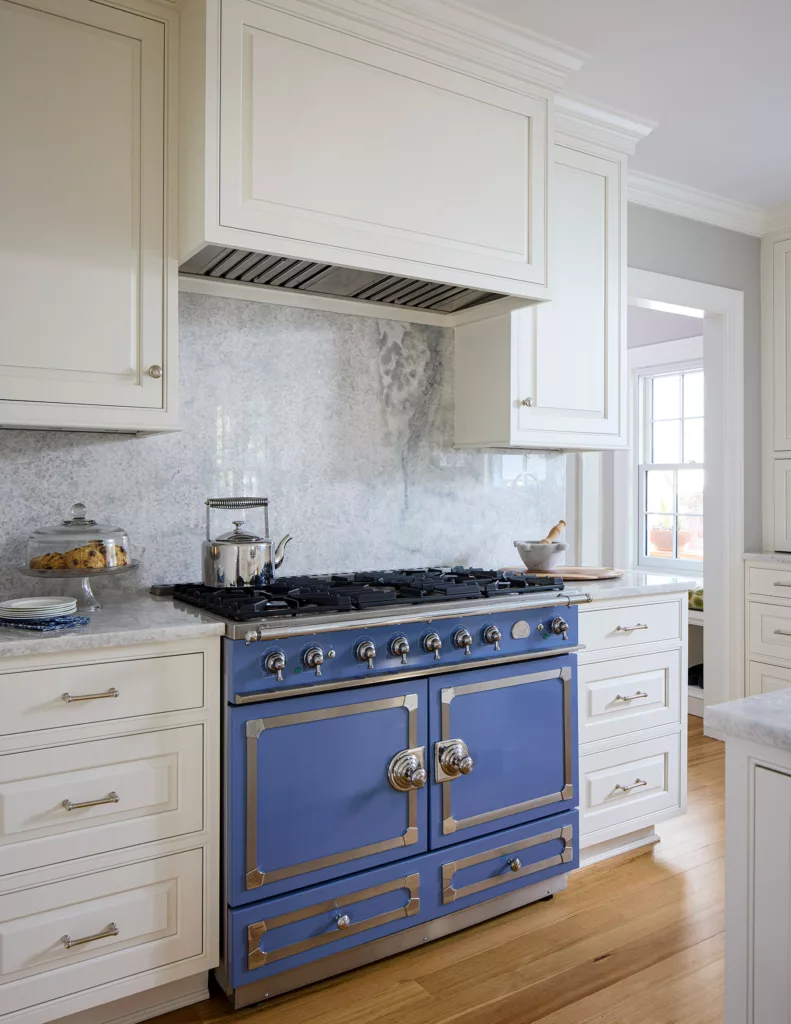
How to Coordinate Cabinets with Floors and Countertops
Your kitchen cabinet color doesn’t exist in a vacuum. It should work in harmony with the other major surfaces in your kitchen, especially your flooring and countertops.
Light Cabinets + Dark Floors: This is a popular contrast that makes the kitchen feel grounded. Pair white or light gray cabinets with dark wood or slate floors for a balanced, high-contrast look.
Dark Cabinets + Light Floors: This creates a modern, dramatic effect. Consider navy or black cabinets with pale wood or cream tile floors to keep the space feeling open.
Mid-Tone Cabinets + Neutral Floors: For a cohesive feel, mid-tone gray, green, or wood cabinets look great with soft beige or greige flooring.
Stone Countertops: If you have bold marble or veined quartz countertops, choose a cabinet color that complements—rather than competes with—the pattern. Neutral cabinets work well here.
Wood Countertops: For kitchens with butcher block or walnut countertops, a contrasting cabinet color like white, sage green, or dark blue creates an appealing mix of textures and tones.
Use samples to test how your cabinet color looks under your kitchen lighting, next to your countertop and floor selections. This hands-on approach prevents surprises and ensures every element works together.
Color Strategy for Open-Concept Kitchens
In an open-concept home, your kitchen cabinetry color should flow naturally into the surrounding rooms. Here’s how to approach cabinet color in a space without walls:
- Repeat tones: Use the same color family in cabinetry, furniture, or accent decor in adjoining spaces to create visual continuity.
- Create zones: Use different cabinet colors to define spaces. For example, a white perimeter with a bold navy island helps establish the kitchen zone within an open floor plan.
- Match wood tones: If your adjacent living space features exposed beams or hardwood floors, choose cabinet colors that complement (not clash with) the wood tone.
When your kitchen is part of a larger visual field, the cabinet color becomes a key player in the overall palette of your home.
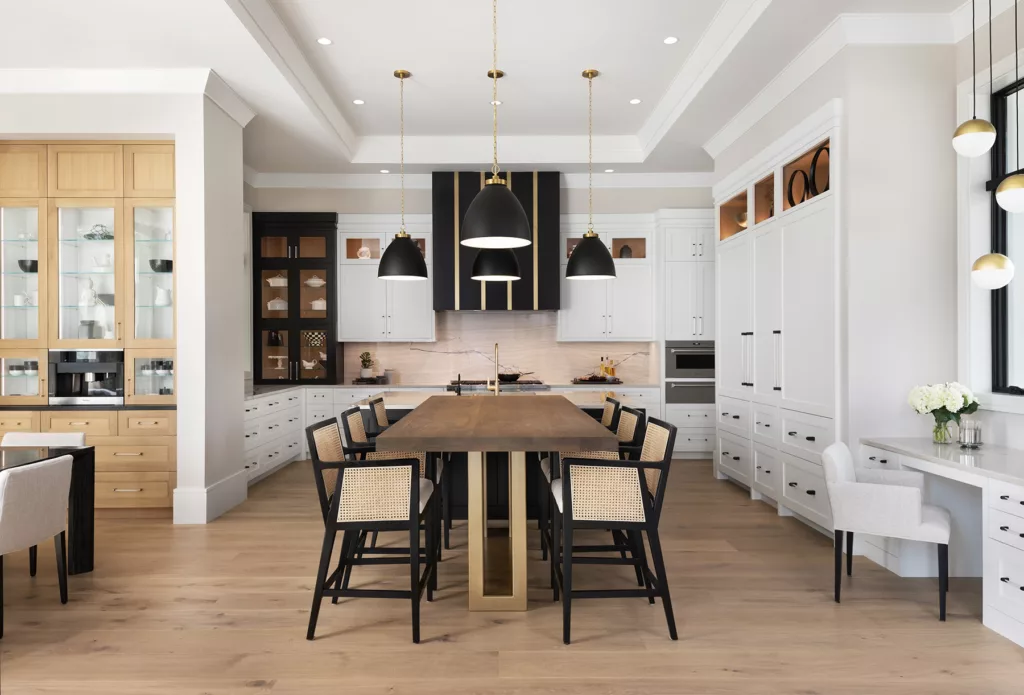
Frequently Asked Questions About Cabinet Colors
Q: What are the most popular kitchen cabinet colors right now?
White, light gray, navy blue, forest green, and natural wood tones are among today’s most requested cabinet colors.
Q: Will painting my cabinets a bold color hurt resale value?
Not necessarily. Bold cabinet colors can help your kitchen stand out, but neutrals tend to appeal to a broader audience. If resale is a top priority, consider classic tones or a two-tone design that balances bold with neutral.
Q: How do I know if my cabinet color is too trendy?
If you’ve seen the color in every design magazine this year, it may be trending. Choose a version of the trend you truly love, or incorporate it in a way that’s easy to update later (like on an island or accent wall).
Q: Can I mix painted and stained cabinets?
Yes! Painted uppers and stained wood lowers create visual interest while balancing softness and texture. It’s a great way to combine classic and contemporary elements.
Q: Do all my cabinets need to be the same color?
Not at all. Designers often mix finishes or use different colors for the island, pantry, or range hood. This adds depth and personality to your space.
Final Thoughts
There’s no one-size-fits-all approach to kitchen cabinet color ideas. The right choice depends on your taste, lifestyle, kitchen layout, and natural light. Whether you’re leaning toward bright whites, moody blues, natural wood, or soft pastels, your cabinetry color sets the tone for your entire space.
With custom cabinetry from Quality Custom Cabinetry, you never have to compromise. Every color, every finish, and every detail is tailored to you—so your kitchen doesn’t just look beautiful, it feels like home.
Ready to create your dream kitchen?
Find a Quality Custom Cabinetry designer today and explore custom cabinetry designed around your perfect palette.
Find a Designer
We have 100+ hand-selected design partners across the country. These award-winning designers can guide your vision for your home into a fully satisfying reality.